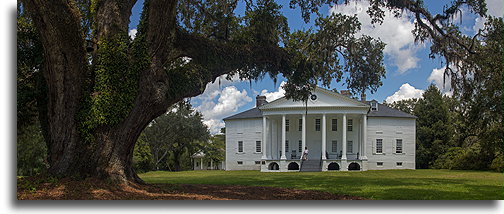The remnants of a colonial-era rice cultivation we found in the Hampton Plantation in South Carolina. It was established in 1735. The Georgian-style wooden frame mansion on the plantation is one of the oldest of its type in the United States. It was a summer retreat for plantation owners, who live in Charleston during wintertime.

Worth mentioning is the old the so-called Washington Oak which stands in front of the plantation house. When visiting in 1791, George Washington was asked whether an oak tree should be cut down, to create a better view. He replied that it should be spared. President's will should not be opposed, so the tree stands to these days.
It is estimated that 151 thousand African slaves reached South Carolina and were sold here to work mostly in the plantations. This region had the highest demand for the work force of all American colonies and South Carolina planters had a very specific need for slaves. The most valuable were workers from present-day Senegal and Ghana. The reason was very simple; people brought from these regions were already experienced in working in the rice fields. Rice cultivation in the west coast of Africa has a history of 3500 years. In South Carolina, it turned out to be so profitable that it became the major export to the European countries. Production of Carolina Gold brought fortunes to plantation owners who could afford to pay for one slave from 10,000 to 20,000 USD in current money. Large plantations owned over 200 or even more slaves who worked from sunrise to sunset. Life expectancy for plantation slaves was no more than 10 years. It was not only because of hard work in the hot and humid climate. Rice fields are the constant danger from snakebites and alligator attacks. Those who survived killed malaria or other diseases rapidly spreading among black African slaves.





